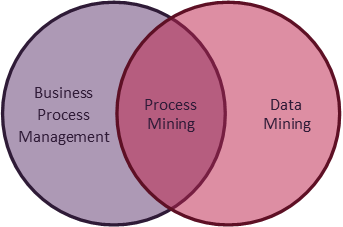Data Process Mining: “Less sexy, but more valuable than Big Data”
Organizations are increasingly registering data that can be used to analyze processes. Unfortunately, traditional data mining and BI (Business Intelligence) techniques fall short due to the absence of a clear process orientation. Process mining, on the other hand, bridges the gap between data mining and model-based process analysis. This makes it possible to show what is actually happening. By playing historical data, it is also possible to show where the bottlenecks are and where processes deviate from the ideal path. These insights are extremely relevant for both the IT professional and the business consultant (Process Mining: Wat gebeurt er nu echt? … en hoe kan het beter?, n.d.). This paper will elaborate more on the fundaments of process mining and the opportunities for the market.
Process mining essentially works as follows: people who use computer systems within an organization, leave traces. The large amounts of stored data are analyzed to show how processes are proceeding, with the aim of ultimately making them more efficient. Process mining exploits the information recorded in event logs to perform an analysis of the real process afterwards. There is a distinction between three types of process mining:
1. Discovery: With the help of clever analysis techniques that search for frequently occurring patterns, it is possible to derive process models automatically. These models provide insight into what really happens within a process or organization.
2. Conformance: The found process models often deviate greatly from the normative process descriptions that often assume an ideal situation that has little to do with reality. In order to map deviations between such an idealized process description and the actual state of affairs, so-called “conformity checking” techniques are used. These can show the degree of compliance (for example, “80% of the events are going according to plan”) and where the largest deviations can be found in the process (for example, “this monitoring activity is frequently skipped”)
3. Enhancement (extension): where the process models are adapted and improved according to the data of the real process.
Process mining consists of two main steps:
• Step 1: Process selection and prioritization, which clearly establishes the improvement objectives and identifies where the business value is created in different parts of the organization and how high-level processes affect the creation of value (Robledo, 2018).
• Step 2: capture of the process information to be improved to represent it as a process model (Robledo, 2018).
Professor Wil Van der Aalst is considered an international pioneer in data analysis of business processes (Kleyngeld, 2018). Van der Aalst started working on process mining in the late ‘90s, as he saw that “IT-projects fail often because the difference between what people said what they did and what they really did was large.” (Kleyngeld, 2018). Professor Wil Van der Aalst: “At the time we started doing this, the data about human actions was limited and we still collected data by letting people keep logs themselves. It has since evolved into a mature field. There are 25 suppliers of process mining software and around 200 organizations that work with it in the Netherlands.” (Kleyngeld, 2018).
Moreover, ResearchandMarkets explains that the global process analytics market size is expected to grow from $185.3 million (2018) to $1,421.7 (2023), which is almost 8 times within 5 years. One of the main factors for this grow is that the implementation of Digital Transformation is driving awareness of users to understand business processes and analyze them (Robledo, 2018). Furthermore, Europe represents the largest market size, where Germany and The Netherlands are the top countries that contribute to the process analytics market. The U.S. shows the highest opportunity for growth in the following years. Will process mining thrive and become the mainstream way of analyzing your processes?
Bibilography
TUE (n.d). Process Mining: Wat gebeurt er nu echt? … en hoe kan het beter? Retrieved from TUE: http://wwwis.win.tue.nl/~wvdaalst/publications/p635.pdf
Kleyngeld, J. (2018, January 9). Process mining: “Minder sexy, maar waardevoller dan big data”. Retrieved from CFO: https://cfo.nl/artikel/process-mining-het-einde-van-politieke-discussies-in-bedrijven-
Robledo, P. (2018, September 23). Process Mining Plays an essential role in Digital Transformation. Retrieved from Medium: https://medium.com/@pedrorobledobpm/process-mining-plays-an-essential-role-in-digital-transformation-384839236bbe


